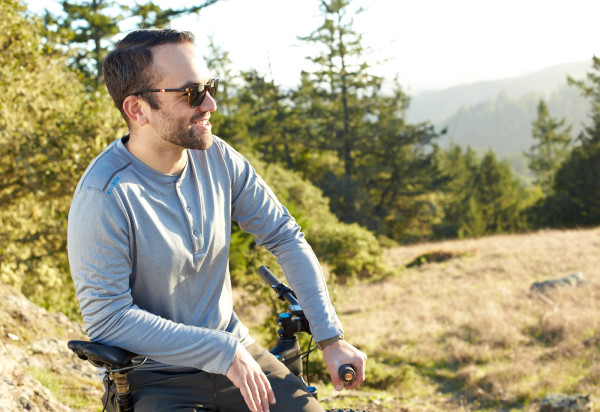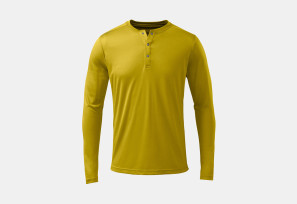
Kitsbow has teamed up with Polartec to stitch together the Power Wool Long Sleeve Base Layer. The high-performance fabric from Polartec is combined with Kitsbow’s style and brand to make a versatile base layer that can also be a cool weather outer.
This new fabric from Polartec is really interesting, it uses different yarn on each side of the fabric, so there is wool close to your skin to provide warmth, and then polyester/nylon (Polartec fleece) on the outside. Wool excels at moving moisture away from a body, as well as providing warmth even when wet, so it makes sense to put it against the body, and then the synthetic outer dries that perspiration quickly.
One of the benefits of Polartec is that it can be made from recycled materials, so this hybrid garment is more than 50% recycled fibers. The Power Wool base layer is made in the USA, and has a quarter-length snap closure and tailored fit like other Kitsbow garments.
Click past the jump to see the two colors offered, and a refreshing surprise that the price is not astronomical…


“In all of our design development, we look for ways to make products and fabrics work better for mountain biking,” said Charlie Cronk, Kitsbow designer and co-founder. “We were excited to work with Polartec to utilize the innovative fabric technology – the composition allows for maximum wicking, breathability, comfort, odor resistance and durability, making it a perfect addition to the Kitsbow line.”
Kitsbow’s Power Wool Long Sleeve Base Layer is $115 and is available in flash yellow and titanium. Given that the base layer is made by Kitsbow, and made in the USA, the price is actually pretty impressive, since similar garments made overseas can be around the same price.